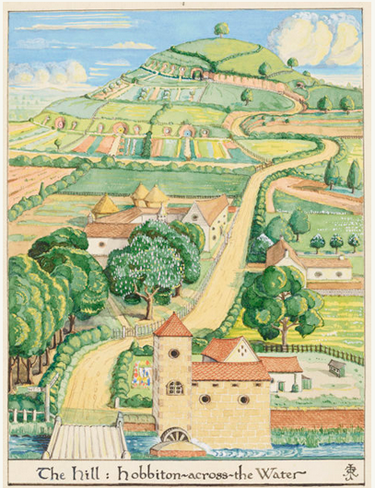The Tolkien Estate now has a web page worth a visit, offering interesting bits of Tolkieniana, including paintings, maps, some of his scholarly articles, &c.
————————–
Earlier this year, David Engels reassessed the significance of J.R.R. Tolkien’s mythopoetic world-making.
[I]t is tempting to associate Tolkien’s enormous mythopoeic activity with the catchword “escapism”, and to reduce it once again to his biography, albeit this time not as a correspondence but as a compensation. This, too, misses the point — all the more so because Tolkien’s earliest literary activity goes far back into his teenage years: his work is not a reaction to his life, but rather the two grew in union, not unlike the mythical trees Telperion and Laurelin. Indeed, one might even regard Tolkien’s rather ordinary academic and family life as a consequence of his consuming, lifelong work on myth rather than the other way around. But what was Tolkien’s intention — and what can we learn from him?
In the beginning, there was disappointment. The Anglo-Saxon world, unlike France or Germany, has scarcely left any traces of an indigenous myth tradition; even the saga of King Arthur belongs to the pre-Anglo-Saxon, Celtic tradition. The Norman Conquest destroyed the entire Anglo-Saxon legend tradition, apart from a few nursery rhymes and place names and a very brittle literary corpus.
As an ardent lover of the Northwest of the Old World, the young Tolkien felt cut off from his own heritage and enthusiastically took up Indo-European linguistics as a technique for reconstructing the historical and mythical tradition of times long past. He set about, partly in play, partly in earnest, creatively deciphering and reconstructing the hitherto misunderstood evidence of England’s dark centuries. In the process, the boundary between etymology and mythopoetics quickly blurred, as Tolkien enriched the hypothetical material obtained by merging it with the archetypal content of the other legends of the ancient world. He created a mythical tradition that took on a character of its own.
————————–
Darnya Kolomiiets, another brave and subborn Ukrainian, while explaining in the London Spectator her decision to remain in Kiev referenced Tolkien.
These orcs destroy absolutely everything. They fire rockets at us. They send sabotage groups. They shoot indiscriminately at people in the villages and countryside. Near Kyiv is the town of Irpin. Or, I should say, there used to be a town called Irpin. It was full of young couples and their children, as well as lots of new buildings. It has been entirely destroyed by Russians determined to break through into Kyiv.






Jim Bjaloncik
As a virtually life-long fan of Tolkien (I first read his works as a sophomore in high school and am now 70, with almost all of his printed material on my bookshelves), I’m delighted to see this source that is new to me. I have all of the calendars that came out over the years, especially the first ones that reprinted a lot of Tolkien’s own art work, etc. I know I’ll find this WEB page a new source of great material on JRR. THank you for making it known to all of us!
Please Leave a Comment!